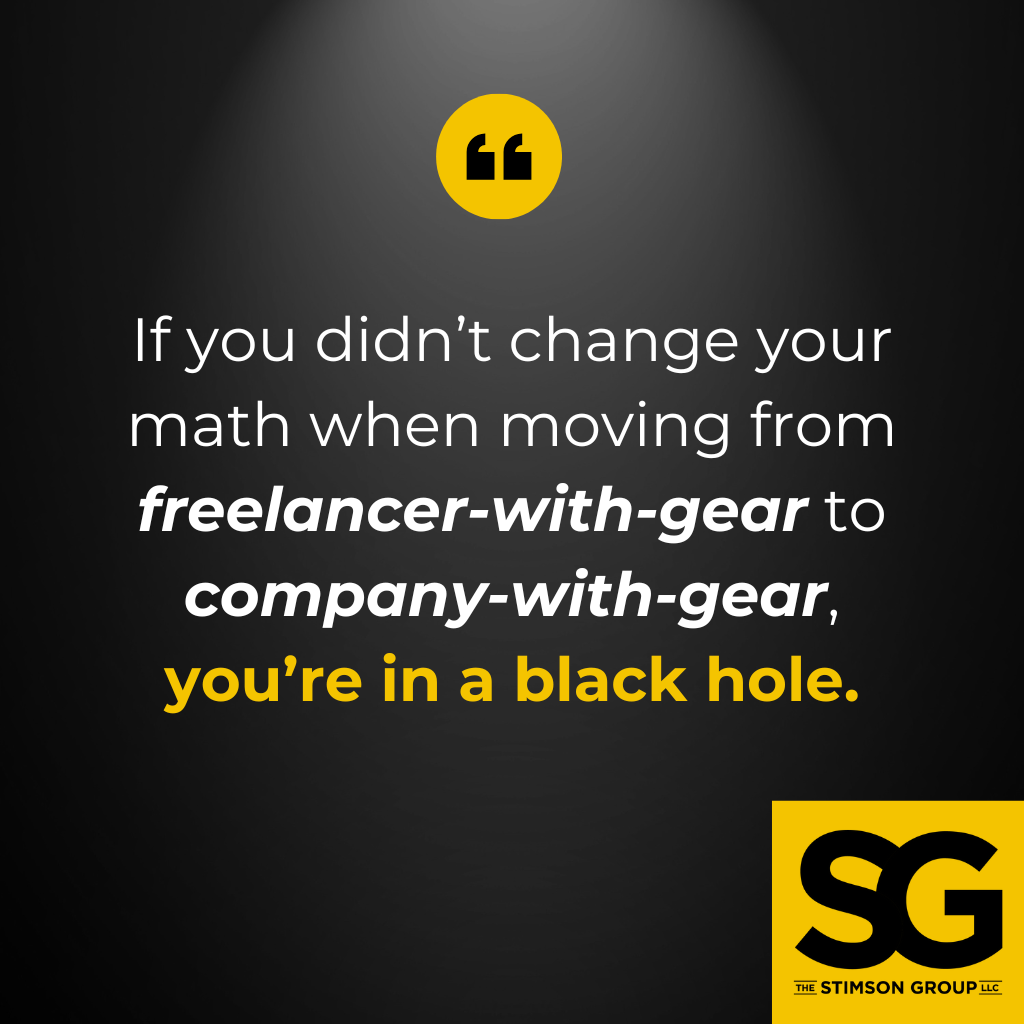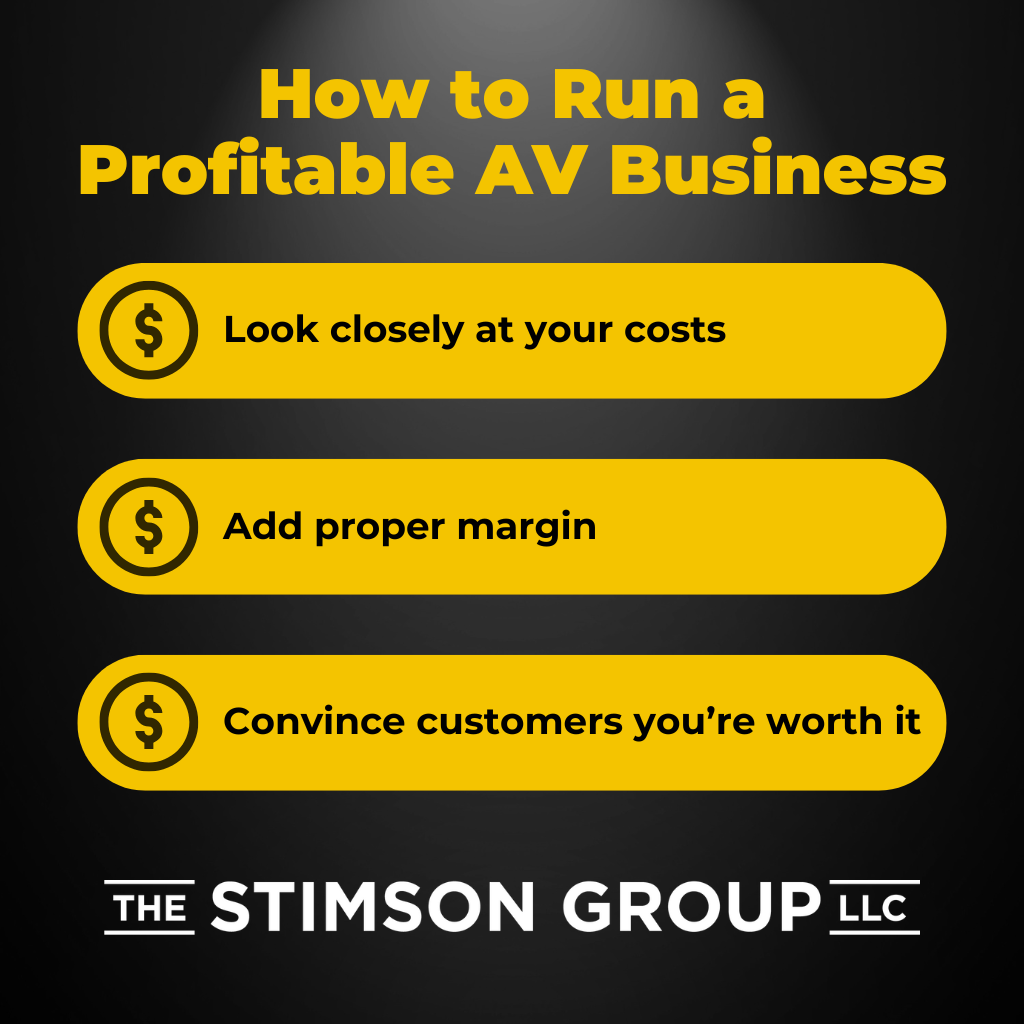
Listen instead on your Monday Morning Drive:
Nobody goes to business school dreaming of owning an AV company. Most of us are accidental entrepreneurs.
Many of us started as freelance technicians who enjoyed making money without a “real job” or a boss. Then came the equipment purchase trap: “I love running cameras, so I bought my own camera rig. I figured I’d get more gigs that way.”
This is how it starts.
The Freelancer’s Evolution
A freelancer with gear often just becomes a freelancer with more gear.
The progression is predictable:
- Start as a freelancer with technical skills
- Buy equipment to get more work
- Buy more equipment to get different work
- Hire other freelancers to help with bigger jobs
- Buy even more gear to keep employees happy
- Suddenly need accountants, attorneys, and assistants
This accidental path into business ownership is the origin story behind 60% of companies in our industry. We had skills that needed equipment, or we saw equipment being used and thought, “Why can’t I make money off that?”
Did we know what we were doing? No.
The Pricing Trap
When you were a freelancer, your rates mattered. You started cheap enough for people to take a chance on you. Perhaps they let you charge more after you proved yourself.
What you could get was more important than what you wanted to get. You might have wanted $500 a day, but you took $350 because that’s what you could get consistently.
But pricing plays a trick when you shift from freelancer-with-gear to entrepreneur-with-employees. Suddenly, you look at your work as a business. You need pricing structures to understand how to sell effectively.
That’s when the downfall starts.
The ROI Reality
Whether you own equipment should be determined by:
- How quickly you can pay it back
- When you can start making money from it
- How long that revenue continues
For a freelancer, a three-year payback might work. Larger companies need to break even in one year or less, then earn significant profits.
If you didn’t change your math when moving from freelancer-with-gear to company-with-gear, you’re in a black hole. You found the easy way in, but there’s no easy way out.

Selling Outcomes vs. Renting Gear
When we start selling outcomes, the value of what we do becomes greater than the sum of its parts.
A freelancer with gear is the sum of his parts: camera rig + operator = fixed cost. But when quality and expertise deliver more value than what clients pay, we’re selling outcomes, not rentals.
In other words, we don’t rent out equipment. We offer services that benefit our customers.
Our team brings the right tools to the job site and uses them to meet the client’s needs. If we treat events like “gear and bodies transactions” and measure value by time and pieces:
- We’ll only send what’s explicitly required and nothing more
- Clients will try to cut corners on elements they don’t understand
- Everyone works toward a mediocre outcome
Starting Over
If you could restart your business knowing what you know now, how would you approach a big job?
If a client approached you and said, “I love your attention to detail. Would you handle our shareholders’ meeting?” you’d calculate all your costs: equipment rentals, freelancer fees, and services needed. Then, you’d add margin.
If your contribution is just coordinating subcontractors, that has less value than if you personally make the event successful.
Your specific talents — finding the right shot, making the CEO look great, boosting client confidence, building trust — create more value, and deserve more margin, than a competitor who hires the same people and books the same equipment.
We sell based on likely cost plus margin. We keep our promise to the client while looking for savings. If I estimate costs at $1,000 and execute the event for $800, I make an extra $200.
My sell price is based on replacement cost: what I’d most likely pay to get what I need. I might find better deals once I win the job.
This approach is different from the rental mindset. We value outcomes and expertise over equipment lists and hourly rates.
The Big Mistake
The fatal error comes when you think, “I need to buy more gear and hire more people to reduce my job cost. That way, I can charge less and win more jobs.”
Unless an asset consistently delivers an annual margin of at least three times its cost, it’s not a good investment.
Your chosen solutions might actually deter buyers who want a different approach. Remember when speaker brands or video projector manufacturers mattered? What if you invest in an LED wall that suddenly becomes unpopular?
And what if clients want better technicians than the ones you employ? You’d say, “I would make less money if I sent you better technicians. I need to send you the technicians I have.”

The Better Way
The easy way into your business is buying stuff and hoping people rent it. The right way to run your business is to:
- Look closely at your costs
- Add proper margin
- Convince customers you’re worth it
Good customers make it easy. They say, “I want to do business with you.” You reply, “Great. Here’s what it’ll take. Let’s include what you want, remove what you don’t need, and I’ll determine what it costs to provide all the tools and people to make it work.”
The margin you add must be a good return on your time, effort, and expertise.
The Intentional Entrepreneur’s Approach
Intentional entrepreneurs attract buyers who prefer quality over price. But if you don’t know your costs and/or your ideal margin, you’ll rely on outdated pricing models that:
- Tie your hands
- Tie the customer’s hands
- Don’t deliver the value you want
- Prevent you from making money
Rental is a concept we created, not one we need to run businesses, serve our clients’ best interests, and make money. It’s time to break free.





Leave a Reply